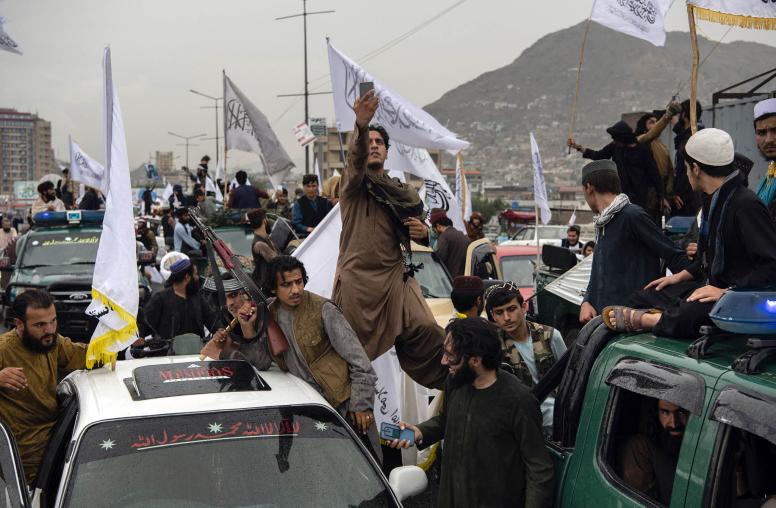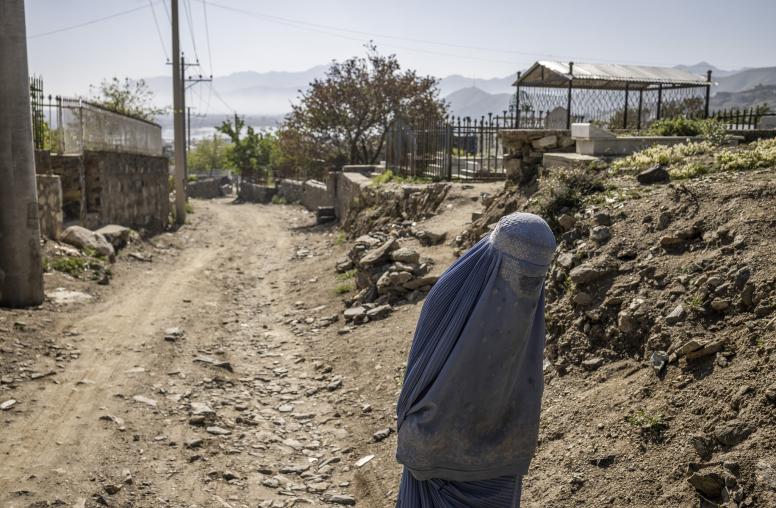For the Afghan Peace Process to Work, Women Must be Involved
Afghan women have made fragile gains in the past 18 years—they could be lost if they remain excluded from peace talks.
In recent months, several developments have fostered renewed hope that a political settlement with the Taliban could be reached, bringing an end to the 17-year war in Afghanistan. For years, the peace process has failed to make any headway as all the major actors—the United States, the Afghan government, and the Taliban—have made contradictory demands over who should have a seat at the negotiating table. Even when preliminary negotiations have happened, one critical, and needed voice, has been mostly absent: Afghan women.

After the fall of the Taliban, many Afghan women, especially in cities, saw major and immediate improvements in the quality of their lives and access to basic rights. Since then, the country has seen a steady increase in women’s education and entrepreneurship, as well as female activism in public and private spheres. Despite this noticeable progress, Afghan women continue to be absent or severely underrepresented in peace talks.
In the past 18 years, Afghan women have made significant contributions to drafting legislation, political reform, economic development, literature, and diplomacy. Any political settlement must recognize these contributions, and the sacrifices that Afghan women made during decades of war to provide an enabling environment for women to further develop their potential and cultivate a more inclusive and tolerant society.
Women in urban and rural settings are already engaged in local-level peacebuilding and conflict resolution, but they must also be included in national-level peace processes for these efforts to reach their maximum potential and facilitate a sustainable peace throughout the country.
Peace Processes are More Effective When Women are Included
The bottom line is Afghan women want peace and they want to have a say in how it is negotiated. Without women at the negotiation table, a long-term and inclusive peace is dramatically less likely. Indeed, studies show that the inclusion of women in peace negotiations, leads to peace agreements that are representative of the needs of the people they affect and, therefore, more sustainable. Negotiations in Colombia, Northern Ireland, and the Mindanao region of the Philippines all showed important shifts and better results once women were strategically included in negotiations.
The bottom line is Afghan women want peace and they want to have a say in how it is negotiated.
U.N. women reports that “[w]omen’s direct participation in peace negotiations increases the sustainability and the quality of peace.” Other studies show that peace agreements are 35 percent more likely to last at least 15 years when women participate. An analysis of 40 peace processes over the last three decades found that when women were able to influence peace processes, an agreement was almost always reached. U.S. Congressional research finds that women are effective in “resolving disputes through non-violent mediation and negotiation, stabilizing societies … [and] that peace negotiations are more likely to succeed and to result in durable peace agreements when women participate in the peace process.”
And yet, women remain largely excluded from peace negotiations: the Council on Foreign Relations found that between 1992 and 2018, women only made up 13 percent of negotiators, 3 percent of mediators, and 4 percent of signatories in major peace processes.
Afghan Women Bear the Brunt of War
Any future political settlement must recognize women’s sacrifices during the war and their potential contributions in rebuilding the country. There are numerous factors that may have initially contributed to the gains made by Afghan women, including external demands from the international and donor communities, legal frameworks, government policies and strategies—such as the National Action Plan for the implementation of United Nations Security Council Resolution 1325.
Afghan women’s activism has played a prominent role in efforts to increase women’s participation in social and political fields. But despite these measures, Afghan women have many reasons to be concerned about their marginalization and exclusion from the peace process.
Without women’s representation in peace talks, the fragile gains of the past 18 years could be reversed or not fully addressed as part of a political settlement. When Kunduz City was captured by the Taliban in 2015, and Ghazni City early this summer, women in government and organizations that advocated for women were actively targeted. Their offices were destroyed, and women and their families were harassed. Detailed accounts of the persecution were covered by local and international media. Although the capture of Kunduz lasted for a few days, many women who had ran away in the middle of the night refused to go back home and have since settled in other provinces.
To some, the cases of Kunduz and Ghazni may seem like a one-time event that won’t be repeated. But to many Afghan women the horror of their recent past is never too far. Even today, in areas under the control of Taliban (reportedly 14.5% of the country) girls’ education is limited. In contested areas (over a third of the country), girls who choose to attend school face high threats and insecurity. Taliban fighters, while acknowledging some mistakes in the way they treated women, continue to consider their recent gains and freedoms as an indication of an un-Islamic system.
Still many women are cautiously optimistic about the possibility of peace negotiations with the Taliban. In urban areas, those with education and lucrative jobs—who may have the most to lose under a Taliban-influenced regime—are aware of the risk but see no other choice except peace.
“Today, I’m not able to return to my province to visit my family from the fear of Taliban,” one such woman from Jawzjan said at a recent event at USIP, adding, “I am soberly aware of the cost of peace that I have to pay.” In rural areas, women who may be uneducated and unemployed may have a different reason for wanting peace. Early in 2018, women who had lost children and husbands to the war rallied for peace in Helmand, imploring both the government and the Taliban to stop the war.
The dearth of women’s representation is partially due to failures of the Afghan government and the international community and their lack of a strategy that allows a constructive role for women. But their absence from these discussions is also due to women’s lack of strategy and petition for their own inclusion. The burden of participation falls on Afghan women, particularly those in leadership roles who have access to local communities and policymakers.
The meaningful inclusion of Afghan women in different phases and levels of the peace process will result in a more inclusive process and lasting agreement, which ensures that women’s recent gains are not lost. With efforts underway to jump start the peace process, it is up to Afghan women leaders to demand a seat at the table to ensure they have a significant role in the most important process in the modern history of their country.
Marjan Nahavandi is a senior program officer with the U.S. Institute of Peace in Kabul. Belquis Ahmadi is a senior program officer for the Institute in Washington, D.C.



